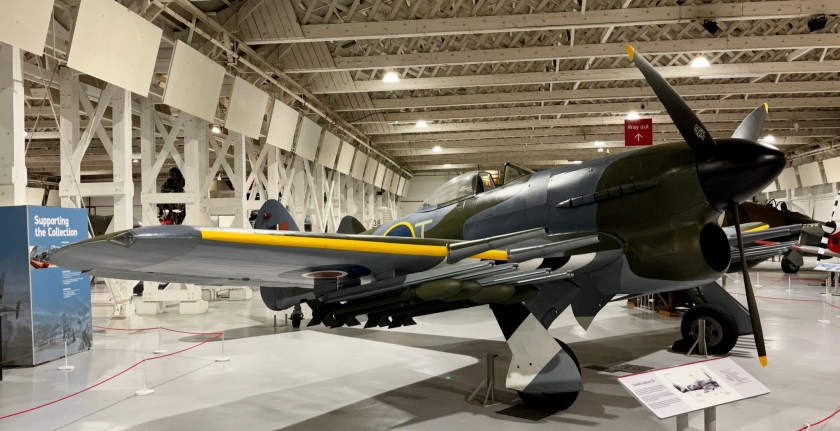The Hawker Typhoon is a British single-seat fighter-bomber, produced by Hawker Aircraft. It was intended to be a medium-high altitude interceptor, as a replacement for the Hawker Hurricane but several design problems were encountered and it never completely satisfied this requirement.
The Typhoon became established in roles such as night-time intruder and long-range fighter.
From late 1942 the Typhoon was equipped with bombs and from late 1943 RP-3 rockets were added to its armoury. With those weapons and its four 20mm Hispano autocannons, the Typhoon became one of the Second World War’s most successful ground-attack aircraft.
Only one complete Hawker Typhoon still survives: serial number MN235. After just forty minutes flight time, it was shipped to Ohio for evaluation by the United States Army Air Force.
Originally on display at the National Air and Space Museum (part of the Smithsonian Institution) in the United States, it was presented to the RAF Museum in Hendon, North London in commemoration of the RAF’s 50th Anniversary in exchange for a Hawker Hurricane.
























